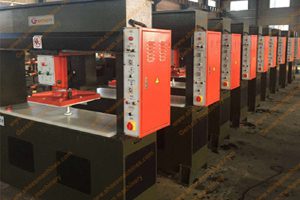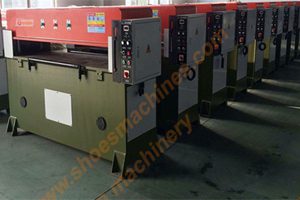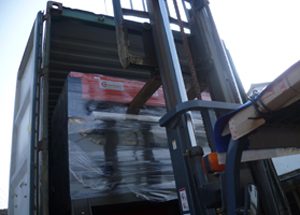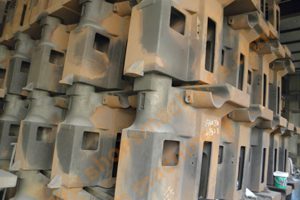The shoe factory that saw Liupanshui finally began to make a profit. Xu Wenxiong, the general manager of Dongguan Yongdu Shoes Co., Ltd., breathed a sigh of relief. Since he opened the branch in Liupanshui, Guizhou three years ago, the factory has been in a state of loss until the break-up in June this year.
Xu Wenxiong told the First Financial Reporter that the choice of Liupanshui was actually initiated by the local government and hoped to undertake some industrial transfers.
In fact, since the signing of the Pan-Pearl River Delta Regional Cooperation Framework Agreement in the first Pan-Pearl River Delta Regional Cooperation and Development Forum in 2004, the relevant provinces have actively guided the orderly transfer of industries. In March 2016, the State Council issued the “Guiding Opinions on Deepening the Pan-Pearl River Delta Regional Cooperation”, and the Pan-Pearl River Cooperation was officially upgraded to a national strategy. Among them, guiding the orderly transfer of industries as an important part of promoting regional economic cooperation and development is still being posed. In an important position.
Opening factories in the Mainland: workers can save half of their salary
China is the world’s largest footwear producer and exporter. For labor-intensive industries such as shoemaking, the biggest cost is labor and factory rent, which is the prominent “comparative advantage” of the inland provinces.
Xu Wenxiong remembers very clearly that when he visited the industrial park in Liupanshui, Guizhou three years ago, the average monthly wage of local workers was 1800-2000 yuan. At that time, the wage level of workers in Dongguan was 3800~4000 yuan per month, that is, local The wage level of workers is only half that of Dongguan.
At that time, Liupanshui took investment promotion as the top priority in accelerating the city’s economic development. In addition to formulating a series of preferential policies including supporting industrial land, it also organized investment detachment to carry out fixed-point and follow-up, Continuous and refined investment, focus on improving the admission rate of investment projects.
“Today, the cost advantage of Liupanshui still exists. At present, the monthly salary of workers in Liupanshui Factory is 2800~3000 yuan, and the factory in Dongguan is more than 5,000 yuan. Plus, when we first went, the local government gave away the rent for 2 years. So in general, the cost there is much lower.” Xu Wenxiong told the First Financial Journal reporter. Even with the transportation costs of raw materials and finished products, it is still cost-effective.
At the beginning of the construction of the plant, coupled with losses in previous years, Xu Wenxiong invested about 20 million yuan before and after. This is a big cost for shoe-making enterprises that have been hit by domestic and foreign markets in recent years.
However, Xu Wenxiong was psychologically prepared for this. He said that workers are recruited and need a learning process. It takes more than two years from the normal operation of the factory to the realization of profitability. This is unavoidable when going to any place to open a factory. Fortunately, the factory in Liupanshui can already see the return.
Changjian Footwear Co., Ltd., another shoe factory located in Houjie, Dongguan, opened the factory inland earlier than Yongdu Shoes. After the global financial crisis in 2008, Tong Shun Shun, the chairman of Changjian Shoes, opened the shoe factory to Hunan and Jiangxi.
“At that time, under pressure from the appreciation of the renminbi, I wanted to try to go to a lower cost place. I chose Hunan and Jiangxi because the workers in our Dongguan factory came from these two places. Later I went to find out that it was really low cost.” Tong Shun Shun said.
Since the “Pan-Pearl Cooperation” was proposed, Dongguan’s footwear industry has gradually shifted to Jingzhou, Hubei, Anhui, Zhoukou, Henan, Ganzhou and Nanchang, as well as Hunan’s Changde, Yiyang, and Zhangzhou inland provinces and cities. The trend of simple upper processing shifting to the entire middle and low-end production line.
Scale shrinks: recruitment is not easy and inefficient
Despite its low cost, Tong Shunshun’s factories in Hunan and Jiangxi remained closed in 2014 and moved to Vietnam and Cambodia. What Xiaoshun did not think was that, in addition to the tariff issue, the most important reason for not being able to become a factory was not recruited.
“If you go to the local area, you will not be able to recruit people. Most people may still be willing to work in Guangdong. The salary is relatively high. We only recruit hundreds of people in the local factory. The workers are not enough (the scale is not going), the cost will not drop. Come down.” Tong Shunshun said.
In the heyday of Dongguan’s footwear industry, Tong Shunshun opened five factories in Dongguan with nearly 10,000 employees and an annual output of 5 million





